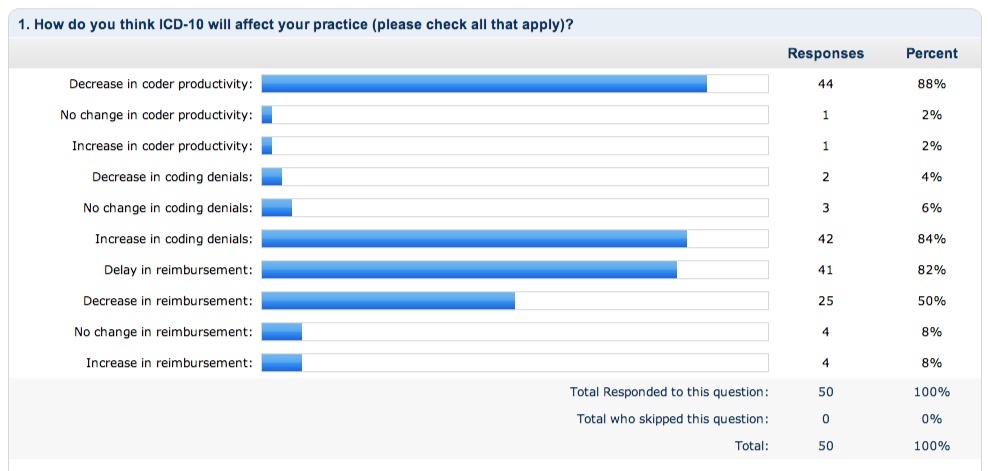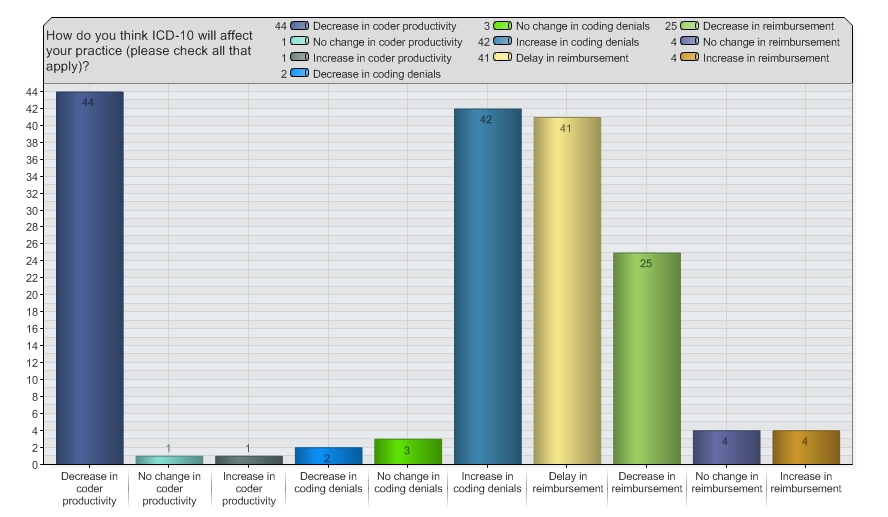RBMA’s Hot Topic Question of the week relates to the impending implementation of ICD-10. For the last year the date of implementation has continued to be pushed back, leaving providers unsure when it will really go into effect. Most providers seem to be pleased by it’s delay because it means they don’t have to learn the new coding system, but it is only a matter of time before we all will need to adapt to the ICD-10 protocols.
The RBMA took to the forums to find out for real how health care professionals in radiology feel about ICD-10 and how it will affect their practice. The survey is still running, but the largely negative response is overwhelming. Participants were asked, “How do you think ICD-10 will affect your practice? Check all that apply.” Options included:
- Decrease in coder productivity
- No change in coder productivity
- Increase in coder productivity
- Decrease in coding denials
- No change in coding denials
- Increase in coding Denials
- Delay in reimbursement
- Decrease in reimbursement
- No change in reimbursement
- Increase in reimbursement
Participate in the survey > Click Here
Currently, the most popular responses reflect the belief that implementation will bring decreased coder productivity, increased coding denials, delayed reimbursement and decreased reimbursement overall.


So, what’s with the all this ICD-10 hating? First of all, there are SO many changes with the new codes. (Review them all here: ICD-10 Education) It is intimidating, especially for those who are already not experts with ICD-9 coding. Many practices and organizations have kept their revenue cycle management in-house for so long, in an effort to cut costs and keep control, but that trend will come to an end.
In theory, ICD-10 should help physicians improve their reimbursements and cut down denials, however that is only if the codes are used appropriately. Heed the warning signs and start preparing now, because ready or not… ICD-10 is coming.










